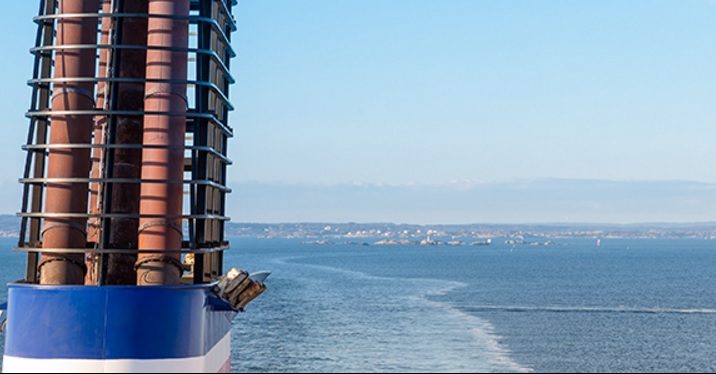Classification society DNV GL has developed a new brochure, in order to offer a set of best practices for the design of ships subject to NOx Tier III requirements and to provide guidance on the considerations that should be taken into account at the newbuilding stage.
According to DNV GL, to ensure the success of any newbuilding plan, shipowners should carefully consider the future operation of their vessels in the newbuilding planning stage, including the implications of the different technological solutions for reducing NOx emissions and how to fulfil the NOx Tier III requirements.
In order to fulfil the stricter NOx Tier III emission limits, ship operators have the possibility of choosing from various options. The optimal compliance option will depend upon many factors, including a vessel’s individual trading pattern, engine size and speed. The brochure examines selective catalytic reduction (SCR), exhaust gas recirculation (EGR), the use of alternative fuels, internal engine modifications, direct water injection (DWI), fuel-water emulsion (FWE) and intake air humidification.
Installing NOx Tier III-compliant technology can offer benefits beyond simply achieving compliance with emissions regulations. Demonstrating a company’s commitment to ensuring sustainable operations has become increasingly important. DNV GL recommends ship owners to consider the installation of Tier III-compliant technology at the newbuilding stage, even if the initial planned operation of the ship is outside of NOx ECAs.
In addition, the installation of Tier III-compliant technology also goes hand in hand with direct financial benefits, as many major ports offer substantial discounts on harbour fees if a vessel complies with third party environmental schemes, such as the ESI.
Selection of the compliance option depends upon the individual trading pattern, engine size, ship’s speed and various other factors, the classification society highlights. At the brochure, DNV GL elaborates on selective catalytic reduction (SCR), exhaust gas recirculation (EGR), the use of alternative fuels, internal engine modifications, direct water injection (DWI) fuel-water emulsion (FWE) and intake air humidification and it examines their pros and cons as well as key challenges involved in their installation.
Pros and cons of SCR
+Tier III NOx compliance achievable (IMO-NOx ECA regimes)
+Very effective NOx removal for most engine loads (70–90% over time)
+Growing reference base, over 300 installations worldwide
–Rather investment intensive
–Limited NOx removal at low engine loads (dynamic positioning (DP) operations etc.)
–Requires urea tank on board and intermittent re-supplies (costly)
–Can result in fuel penalty (less than 1%)
–Additional cost for urea consumption in NOx ECA Areas (equal to approx. 8% additional fuel consumption)
Pros and cons of EGR
+MAN Diesel & Turbo recently announced that it will offer the world’s first IMO-certified
two-stroke engine with Tier III NOx control and EGR systems Systems
+Technology embraced by major engine manufacturers
–Limited operational experience
–Rather investment intensive
–Requires alkali on board and intermittent resupplies
–Fuel penalty (approx. 4 % )
Pros and cons of alternative fuels
+Potentially a low-OPEX solution – benefits owners who pay for fuel directly
+Both SOx and NOx compliance achievable (ECA and CARB regimes), approx. 100% SOx removal and approx. 85% NOx removal from four-stroke engines (approx. 40% NOx removal in high-pressure two-strokes, need EGR for NOx compliance)
+Access to multiple fuel markets (DF engines) and may use liquid cargos as fuel
+Emerging regulations and standardization support LNG as a safe fuel
+Boosts operator company’s corporate social responsibility (CSR) profile
+ Constantly growing merchant fleet with LNG as fuel and gas ready
–Particularly LNG fuel tanks are currently still rather investment intensive
–LNG bunkering grid is still under development (detailed information can be found
on the DNV GL LNGi portal: https://lngi.dnvgl.com)
–LNG fuel tank requires additional space, which might reduce cargo space
More details may be found by reading DNV GL comprehensive here.

































































